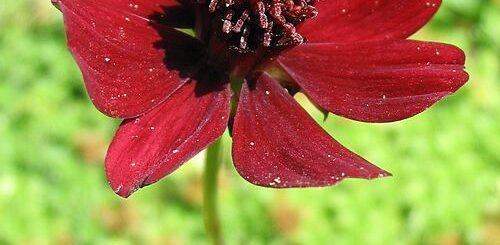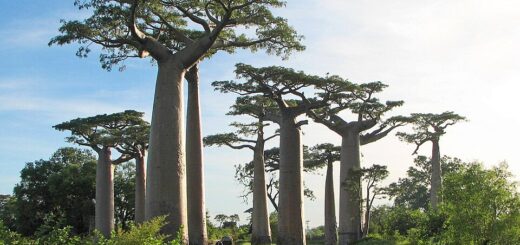Monkey Puzzle Tree – An Ancient Wonder
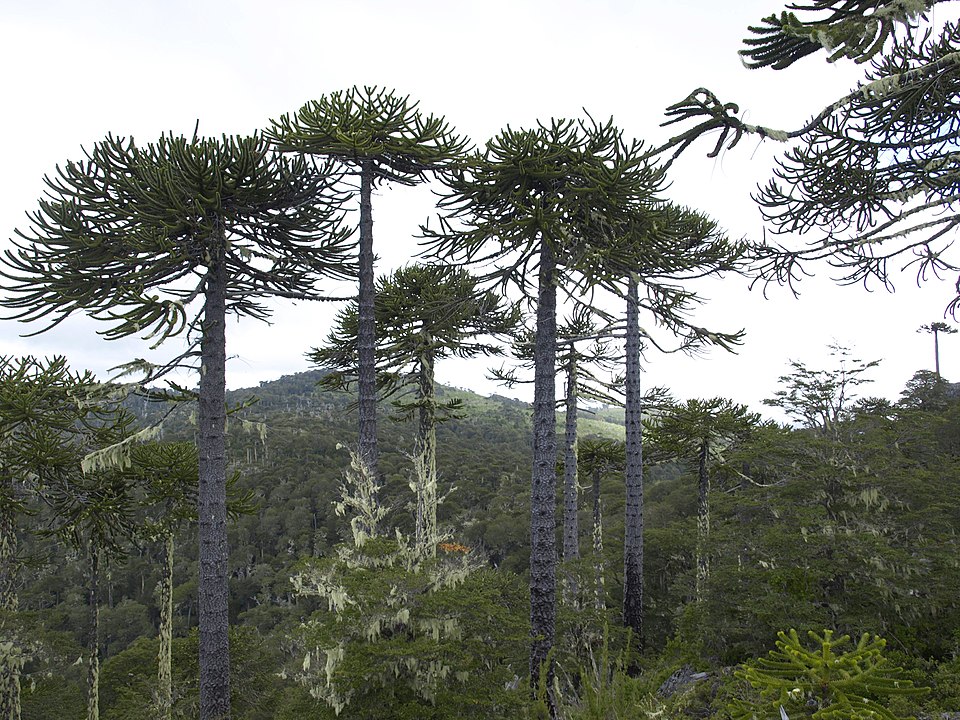
If you’ve ever wandered through a lush forest or a well-maintained botanical garden, you may have stumbled upon a tree that looks like it came straight from a prehistoric world: the Monkey Puzzle Tree. With its striking appearance and fascinating history, this ancient species, Araucaria araucana, is more than just a unique sight, it’s a living relic of Earth’s distant past.
A Snapshot of the Monkey Puzzle Tree
Native to the mountainous regions of Chile and Argentina, the Monkey Puzzle Tree is one of the oldest tree species in the world, dating back around 200 million years. It belongs to the Araucariaceae family and can grow to impressive heights, sometimes reaching up to 40 meters (about 130 feet). What sets this tree apart from others is its unusual appearance: a dense crown of spiny, evergreen leaves and thick, spiraling branches that almost look like something from a science fiction movie. The tree’s distinct, angular structure makes it look somewhat like an ancient, untouchable creature of the forest.
But why the name “Monkey Puzzle”? It’s said that the name originated because the tree’s sharp, spiky leaves are so difficult for monkeys to climb — it would puzzle them. In fact, this tree’s unique form has intrigued botanists, naturalists, and enthusiasts for centuries.
A Closer Look at the Monkey Puzzle Tree’s Appearance
The Monkey Puzzle Tree is instantly recognizable for its spiraling arrangement of scale-like leaves. These leaves are tough, triangular, and have sharp points, providing the tree with a tough defense against predators. The trunk itself is thick and rough, adding to its prehistoric vibe. Unlike many trees, the branches grow out horizontally, giving it a somewhat umbrella-like structure.
In the wild, these trees can live for hundreds, even thousands of years, and they are often found in the temperate rainforests of the Andes Mountains. The cones, which are large and hard, contain edible seeds that are sometimes consumed by the local people.
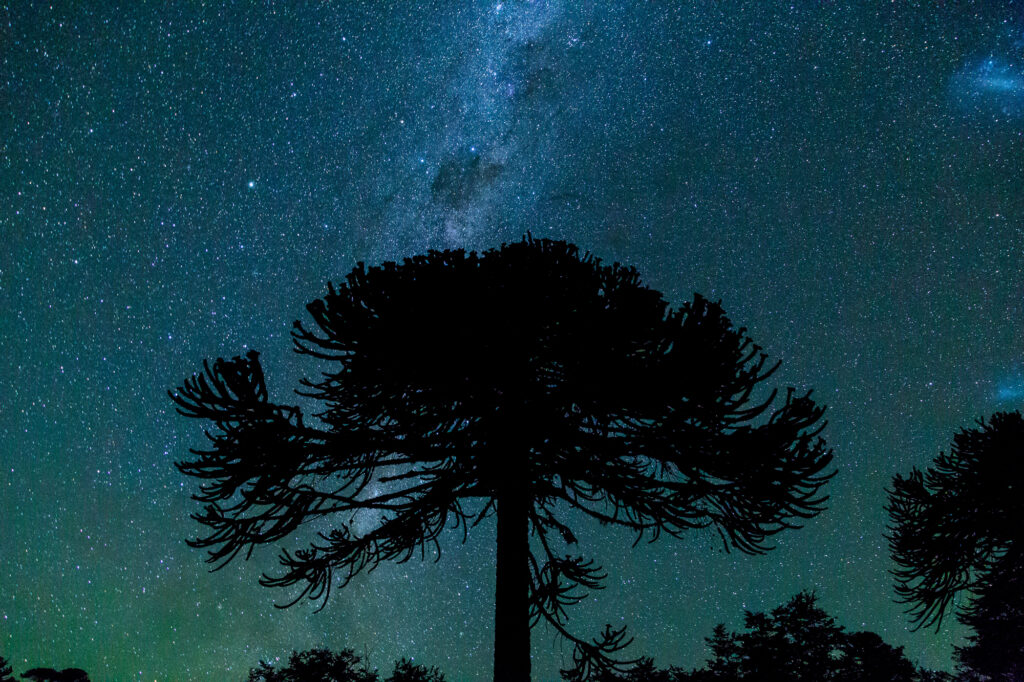
Monkey Puzzle Tree at night in Conguillío National Park © Creative Commons | Author: Vicente Fernández Rioja
The History and Evolution of the Monkey Puzzle Tree
The Monkey Puzzle Tree is a true survivor, evolving in isolation as a relic from the Mesozoic Era. During the time of the dinosaurs, the Monkey Puzzle Tree’s ancestors were part of a much larger family of plants that dominated the landscape. However, as continents shifted and climates changed, this species survived largely in isolation in the Andes mountains.
What’s fascinating about these trees is that they are considered a “living fossil.” Over millions of years, they’ve adapted very little — their overall structure has remained relatively unchanged. This makes the Monkey Puzzle Tree a living link to Earth’s ancient past, showcasing the evolutionary process in a way few other species do.
The Importance of the Monkey Puzzle Tree
These trees aren’t just a remarkable sight to behold; they also play an essential role in their ecosystem. In their native habitat, the trees provide shelter and food for various species of wildlife. The seeds from the cones are a food source for birds and small mammals, while their tough bark can house insects and other critters.
In addition to their role in nature, Monkey Puzzle Trees also serve as an important symbol in indigenous cultures. For many local tribes in South America, the tree holds cultural and spiritual significance. They also have practical uses; the seeds have been harvested and eaten for thousands of years.
Monkey Puzzle Trees in the Modern World
While the Monkey Puzzle Tree is a fascinating symbol of the ancient past, it’s also an endangered species. Its population in the wild is dwindling due to deforestation, climate change, and the expansion of agricultural land. As a result, conservation efforts have been put in place to protect the remaining stands of these incredible trees.
Interestingly, the Monkey Puzzle Tree has also made its way into gardens and parks across the globe. Their unique aesthetic has made them a favorite among gardeners and plant enthusiasts. They’re hardy in certain climates, making them suitable for cultivation in regions with mild winters and cool summers.
However, planting and caring for a Monkey Puzzle Tree isn’t a simple task. These trees require specific conditions — like well-drained soil, cool temperatures, and plenty of sunlight — making them more suited to certain climates, especially in areas like the UK, parts of New Zealand, and other temperate zones.
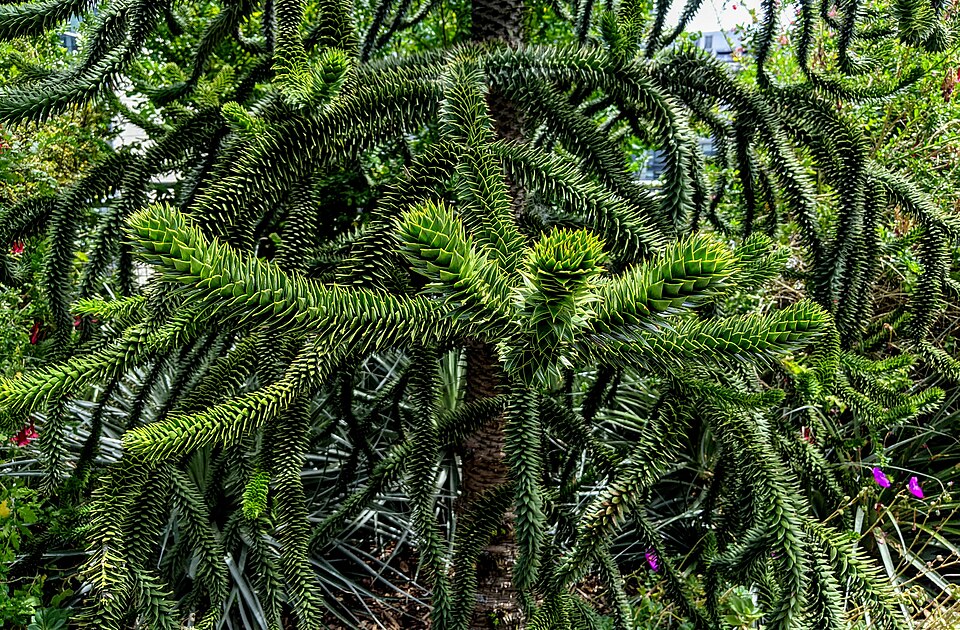
A monkey puzzle tree at Salesforce Park, San Francisco. © Creative Commons | Author: Dicklyon
Fun Facts About the Monkey Puzzle Tree
Longevity – Some Monkey Puzzle Trees can live up to 1,000 years, making them true ancient survivors.
Edible Seeds – The seeds from the cones of the tree are edible and have been used by indigenous peoples for food.
Unusual Cones – The tree produces large, hard cones that take up to two years to mature. These cones have thick scales and contain seeds that are often dispersed by local wildlife.
National Symbol – The Monkey Puzzle Tree is Chile’s national tree, and its image appears on the country’s national emblem.

Araucaria araucana © Creative Commons
The plant that tells the story of Earth’s history
The Monkey Puzzle Tree is a plant that tells the story of Earth’s history, from the time of the dinosaurs to modern conservation efforts. Its extraordinary look, fascinating evolutionary background, and cultural significance make it a tree worth celebrating. As we continue to preserve and protect these ancient giants, the Monkey Puzzle Tree serves as a reminder of the rich natural heritage that exists in our world, one that we must strive to protect for future generations. So, next time you spot one of these amazing trees, take a moment to marvel at its beauty and reflect on the ancient past it represents.
References:
[Monkey puzzle] https://www.woodlandtrust.org.uk/trees-woods-and-wildlife/british-trees/a-z-of-british-trees/monkey-puzzle/
[Wikipedia] https://en.wikipedia.org/wiki/Araucaria_araucana

